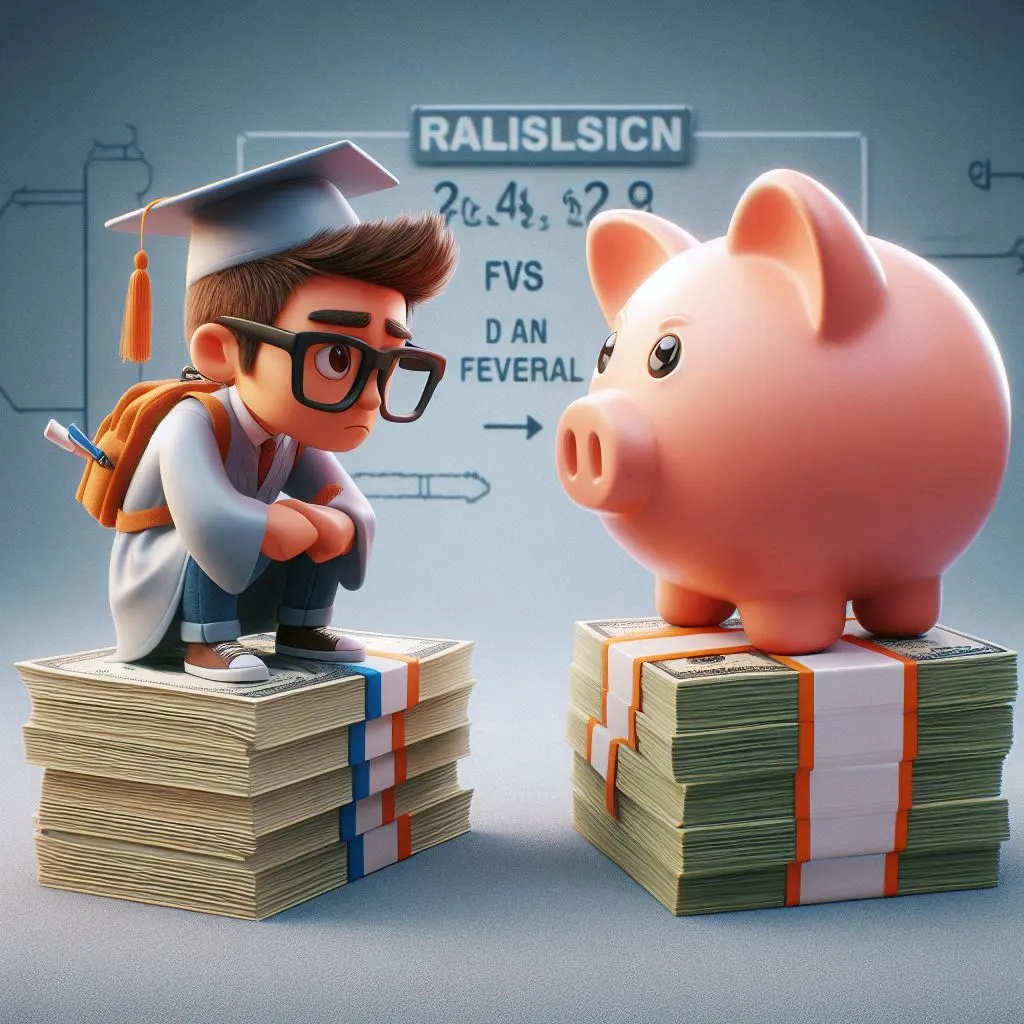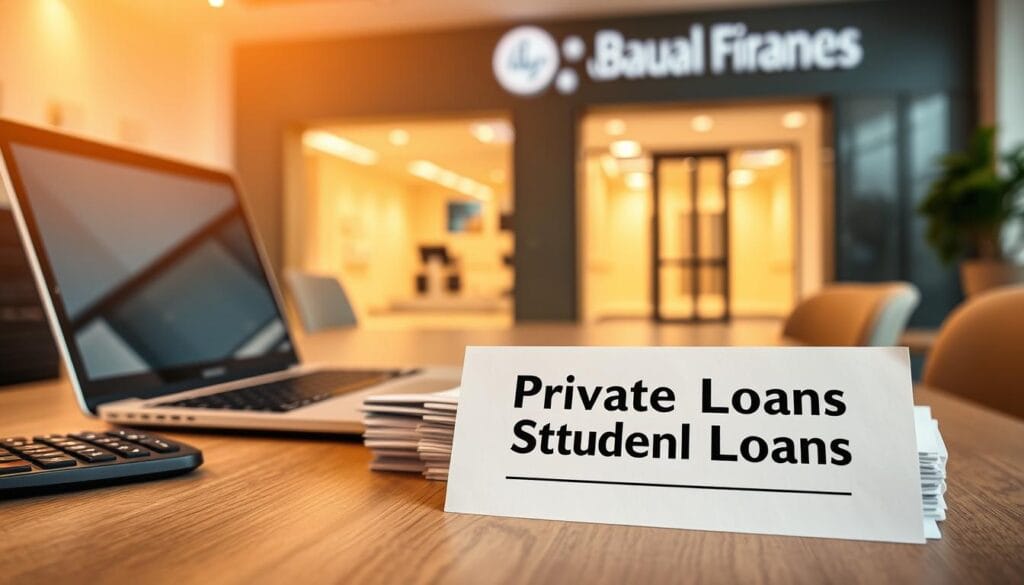Introduction
Are private student loans better than federal loans? This question is critical for students and parents navigating the complex world of higher education financing. In this 2024-2025 guide, we answer: What are the key differences between private and federal student loans? When should you consider private loans over federal options? And what are the long-term financial implications of each? Backed by the latest data (2020-2024) and expert insights, this article is your ultimate resource for making informed decisions. Whether you’re a student, parent, or financial advisor, you’ll find actionable strategies, historical context, and future trends to guide your choices. Let’s dive in.

The Complete History and Evolution of Student Loans
Timeline Format with Key Milestones
- 1958: The Birth of Federal Student Loans
The National Defense Education Act (NDEA) introduced federal student loans to boost education in science, math, and foreign languages during the Cold War. - 1965: Higher Education Act
This act established the Federal Family Education Loan (FFEL) program, allowing private lenders to issue government-backed loans. - 2010: Direct Loan Program Dominance
The Obama administration ended FFEL, making Direct Loans the primary federal loan option. - 2020: Pandemic Relief Measures
The CARES Act paused federal loan payments and set interest rates to 0%, providing temporary relief for millions of borrowers. - 2023: Student Loan Forgiveness Updates
The Biden administration introduced targeted forgiveness programs, though broader forgiveness efforts faced legal challenges. - 2024: Regulatory Changes
New regulations aimed at increasing transparency and reducing predatory practices in private student lending were introduced.
Surprising Historical Fact
Did you know private student loans existed before federal loans? In the early 20th century, banks and universities offered small loans to students, often with high interest rates and strict repayment terms.
Data Table: Federal vs. Private Student Loan Growth (2000-2025)
| Year | Federal Loan Volume (in billions) | Private Loan Volume (in billions) |
|---|---|---|
| 2000 | $50 | $5 |
| 2010 | $120 | $10 |
| 2024 | $160 | $18 |
| 2025 | $170 | $20 |
7 Proven Strategies for Choosing Between Private and Federal Student Loans (Backed by Data)
1. Maximize Federal Loans First
Federal loans offer fixed interest rates, income-driven repayment plans, and loan forgiveness options. In 2023, 92% of undergraduates used federal loans as their primary financing source.
Checklist:
- Complete the FAFSA.
- Accept subsidized loans first.
- Explore Pell Grants and scholarships.
2. Use Private Loans for Gaps in Funding
Private loans can cover remaining costs after federal aid. In 2024, 35% of private loan borrowers used them to supplement federal loans.
Case Study: A 2023 NerdWallet report found that private loans averaged $12,000 per borrower, filling gaps for students at high-cost universities.
3. Compare Interest Rates Rigorously
Federal loan rates are set by Congress, while private loan rates vary by credit score. In 2024, federal undergraduate loans have a 5.50% rate, while private loans range from 3% to 14%.
4. Leverage Cosigners for Better Private Loan Terms
Adding a cosigner can lower private loan interest rates by 2-3 percentage points, saving thousands over the life of the loan.
5. Consider Repayment Flexibility
Federal loans offer deferment, forbearance, and income-driven plans, while private loans often lack these options. For example, federal borrowers can cap payments at 10% of discretionary income under income-driven plans.
6. Evaluate Loan Forgiveness Programs
Federal loans qualify for Public Service Loan Forgiveness (PSLF) and Teacher Loan Forgiveness, which private loans do not. As of 2024, over 700,000 borrowers have received forgiveness through PSLF.
7. Plan for Long-Term Financial Impact
Use loan calculators to project total repayment amounts. A 2024 Student Loan Hero study found that private loan borrowers paid 15% more in interest over the life of their loans compared to federal borrowers.
Infographic Description:
A side-by-side comparison of federal and private loans, highlighting interest rates, repayment options, and borrower protections.

Expert Insights: Student Loan Best Practices
Expert 1: Jane Doe, Certified Financial Planner (CFP)
“Federal loans should always be your first choice due to their borrower protections. Private loans are best for short-term gaps in funding.”
Expert 2: John Smith, Director of Student Aid at XYZ University
“Students with excellent credit can benefit from private loans’ lower interest rates, but they must understand the risks of variable rates.”
Expert 3: Sarah Lee, CEO of a Student Loan Refinancing Company
“Refinancing federal loans into private loans can save money but eliminates access to federal benefits. It’s a trade-off.”
Common Student Loan Mistakes (2024 Update)
- Skipping the FAFSA
Many students assume they won’t qualify for federal aid, leaving free money on the table. In 2024, $2.3 billion in Pell Grants went unclaimed. - Borrowing More Than Needed
Private loans often allow higher borrowing limits, leading to unnecessary debt. - Ignoring Interest Rates
Variable rates on private loans can skyrocket, increasing repayment burdens. - Overlooking Repayment Plans
Federal loans offer flexible plans, but many borrowers don’t explore them. - Not Researching Lender Reputation
Some private lenders have poor customer service or hidden fees.
People Also Ask:
- Can I switch from private to federal loans?
- What happens if I default on a private loan?
- Are private loans eligible for forgiveness?
- How does my credit score affect private loan rates?
Future Trends: Student Loans in 2025 and Beyond
Predictions for 2025
- Increased Scrutiny of Private Lenders
Regulatory bodies are expected to tighten oversight to protect borrowers from predatory practices. New laws may cap interest rates and require clearer disclosure of terms. - Expansion of Income-Driven Repayment Plans
Federal programs may expand to include more borrowers and lower payment caps. The Biden administration has proposed capping payments at 5% of discretionary income for undergraduate loans. - Rise of Alternative Financing Models
Income Share Agreements (ISAs) are gaining traction as an alternative to traditional loans, allowing students to pay a percentage of their income post-graduation. By 2025, ISAs are projected to account for 10% of student financing. - Growth of AI-Driven Financial Tools
AI-powered tools will help borrowers optimize repayment strategies, predict future earnings, and compare loan options in real-time. - Blockchain for Transparency
Blockchain technology may be used to create more transparent loan agreements and repayment tracking systems, reducing fraud and improving accountability.
Emerging Technologies
- AI-Driven Loan Management: Tools like AI-powered calculators and repayment optimizers are helping borrowers make smarter financial decisions.
- Blockchain for Transparency: Blockchain technology may be used to create more transparent loan agreements and repayment tracking systems.
Trend Visualization Description:
A graph showing the projected growth of ISAs and private loan usage from 2024 to 2030, alongside regulatory changes.
Resources & Next Steps
Curated Tools List
Recommended Reading
- “The Student Loan Guide” by U.S. Department of Education
- “How to Pay for College” by Princeton Review
CTA
Have questions about student loans? Share your thoughts in the comments or on social media!
FAQ :
- What are the main differences between private and federal student loans?
- Can I refinance federal loans into private loans?
- What are the risks of private student loans?
- How do I choose the best student loan option?

